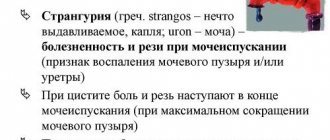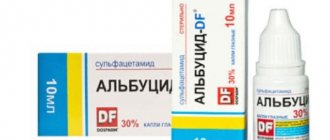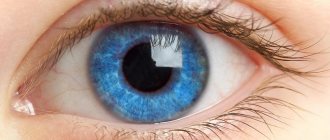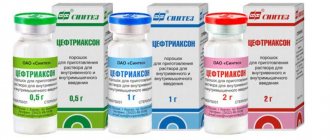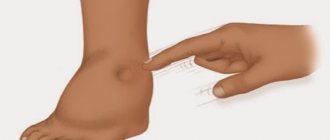During the treatment of cystitis, urologists prescribe complex treatment, including an extensive list of drugs of various types. Patients are prescribed medications in various forms: tablets, injections, powders and suppositories. One of the most popular options for treating the disease in women is Hexicon suppositories for cystitis, which have a wide spectrum of action.
Compound
One Hexicon suppository contains 16 mg of Chlorhexidini bigluconas , as well as a polyethylene oxide base (polyethylene oxide 1500/Polyaethylenoxydum 1500, polyethylene oxide 400/Polyaethylenoxydum 400).
The Hexicon D suppository contains 8 mg of Chlorhexidini bigluconas , as well as a polyethylene oxide base (polyethylene oxide 1500/Polyaethylenoxydum 1500, polyethylene oxide 400/Polyaethylenoxydum 400).
The solution for external use contains 0.5 mg of Chlorhexidini bigluconas with a concentration of 20%, purified water (Aqua purificata).
One hundred grams of the gel contains 0.5 g of Chlorhexidini bigluconas and auxiliary components: Cremophor - RH 40 (Cremophor RH 40), poloxamer 407 (Poloxamerum 407), purified water (Aqua purificata).
One vaginal tablet Hexicon contains 16 mg of Chlorhexidini bigluconas (in the form of a solution of Chlorhexidini bigluconas with a concentration of 20%) and auxiliary components: microcrystalline cellulose (Cellulosum microcrystallisatum), pregelatinized corn starch (Amylum maidis), low molecular weight povidone, stearic acid (Acidum stearicum), lactose monohydrate.
Hexicon for men. Release form and composition
Hexicon is available in the form of vaginal tablets, gel for local and external use, solution for external use 0.05% and vaginal suppositories.
Vaginal tablets are oblong and biconvex, white, with a yellowish tint and marbling of the surface allowed. Available in 10 pieces in blister packs.
The active ingredient in all dosage forms is chlorhexidine bigluconate, in tablets and in solution - in the form of a 20% solution. The excipients in the tablets are the following:
- Microcrystalline cellulose (for medical purposes);
- Stearic acid;
- Pregelatinized corn starch;
- Lactose monohydrate;
- Low molecular weight povidone.
Gel for external and local use Hexicon contains the following components as excipients:
- Cremophor – RH 40 (polyoxyl 40 hydrogenated castor oil);
- Poloxamer 407;
- Purified water.
The solution for external use is transparent (or slightly opalescent) and colorless. Available in 10, 50, 70, 100, 150, 200, 250 and 500 ml in polyethylene bottles with a polymer nozzle. One cardboard pack contains 1 bottle. Purified water acts as an auxiliary substance.
Vaginal suppositories Hexicon are torpedo-shaped, white, with a yellowish tint and slight marbling on the surface. Available in 1 and 5 pieces in blister packs. One cardboard box contains 1 or 2 packages. The auxiliary components in the suppositories are polyethylene oxide 1500 and polyethylene oxide 400.
pharmachologic effect
Hexicon belongs to the pharmacotherapeutic group of drugs with antiseptic and disinfectant effects . By interacting with the structures of the microbial cell , it disrupts vital activity, inhibits development and provokes the death of pathogenic microflora .
The use of various dosage forms of Hexicon in gynecological practice allows not only to successfully combat pathogenic microorganisms , but also to prevent PP-transmitted infectious diseases.
Pharmacodynamics and pharmacokinetics
Chlorhexidine, which is part of Hexicon as an active component , is a strong disinfectant, sensitivity to which is shown by a wide range of microorganisms , including Gram (+) and Gram (-) bacteria , protozoa , herpes viruses .
Hexicon is effective against:
- gonococci (Neisseria gonorrhoeae);
- Treponema pallidum (Treponema pallidum);
- chlamydia (Chlamydia spp.);
- gardnerella (Gardnerella vaginalis);
- ureaplasma (Ureaplasma spp.);
- bacteroides fragilis (Bacteroides fragilis);
- trichomonas (Trichomonas vaginalis);
- herpesvirus type II (HSV-2).
Some strains of Pseudomonas spp. and Proteus spp. are characterized by low sensitivity to the drug . Viruses , fungi , bacterial spores , and acid-resistant bacteria are resistant to its effects .
the chlorhexidine included in Hexicon the drug has a number of advantages over other antimicrobial and antiseptic agents . He:
- does not disrupt the natural microflora of the female genital tract and does not affect the activity of lactobacilli ;
- microorganisms sensitive to it (even with repeated use);
- approved for use in the treatment of pregnant and lactating women ;
- remains (albeit to a lesser extent) active in the presence of bloody discharge and pus.
The effectiveness of suppositories is also ensured by the properties of polyethylene oxide 1500 (Polyaethylenoxydum 1500) and polyethylene oxide 400 (Polyaethylenoxydum 400) included in their composition. These substances ensure a more uniform distribution of the active substance over the surface of the mucous membrane and its deeper penetration into the tissue.
In addition, the polyethylene oxide base dehydrates pathogenic microorganisms and cleanses the mucous membrane of their metabolic products that accumulate on it.
Hexicon vaginal tablets were developed as an alternative to suppositories. For some women, they are somewhat more convenient than candles, since they do not increase the volume of discharge and, therefore, do not require the use of additional hygiene products.
It is practically not absorbed from the gastrointestinal tract , as well as through the skin and mucous membranes when applied topically. Systemic absorption when using Hexicon tablets intravaginally is extremely insignificant.
If 0.3 g is inadvertently ingested, Cmax is reached after half an hour and is 0.206 µg/l.
The drug is eliminated from the body mainly with the contents of the intestines (90%), less than 1% is excreted by the kidneys.
Analogs
Hexicon has quite a lot of analogues, similar both in principle of action and composition. If necessary, you can use the medications given below. The main substitutes for suppositories are:
- Chlorhexidine is a complete analogue, since the main component of Hexicon is this substance. Available in the form of a solution with a pronounced antiseptic and antibacterial effect. The drug is used for irrigation and treatment of mucous membranes.
- Depantol is a combined drug in the form of suppositories, which is used for gynecological diseases, as well as cystitis. The dosage and course of treatment are determined by the gynecologist.
- Amident is a solution that effectively fights gram-positive and gram-negative bacteria. Used for irrigation of mucous membranes. The drug can cause allergic reactions in the form of itching, burning and dermatitis; therefore, before using it, you should consult a doctor.
- Citeal is an antiseptic that is effective against a wide range of microorganisms. It is prescribed for cystitis and a number of gynecological diseases. Before starting treatment, you must read the instructions and make sure there are no contraindications.
- Fluomizin is a suppository that has a similar principle of action to Hexicon. They are usually prescribed for the prevention of inflammatory diseases of the genitourinary system, including cystitis. The medicine has contraindications, so consult your doctor before treatment.
- Macmiror is a more expensive analogue that has a similar principle of operation. Usually the daily dosage of the medicine is one suppository. The need to increase the dose should be considered by the attending physician. This remedy is not recommended for self-medication.
- Terzhinan is a broad-spectrum vaginal suppository. Effective for the treatment of cystitis complicated by fungal infection of the vagina. Most often prescribed in complex therapy.
The choice of one or another analogue, as well as the decision to replace Hexicon with one of the drugs described above, is made by the doctor. Replacement occurs if the patient is allergic to the presented suppositories.
Important! Before starting to take a particular drug, it is recommended to undergo a comprehensive examination, which will identify the causative agent of the inflammatory process.
Indications for use
Hexicon candles - what are they from?
Hexicon suppositories are indicated for the prevention of sexually transmitted infectious diseases microflora sensitive to the action of the drug , for the treatment of inflammation of the genital organs in women, for the prevention of the development of the inflammatory process and infection of the genital tract before childbirth, gynecological operations, abortion procedures, intrauterine examinations, etc. .d..
Indications for the use of Hexicon D suppositories are childhood gynecological diseases .
Indications for the use of solution, gel and vaginal tablets are the same as for suppositories.
Additional indications for use of the solution
The solution is used as a disinfectant to treat purulent wounds and infected burns . In gynecology, surgery and urology, it is used to treat infectious lesions of the skin and mucous membranes .
Dentists prescribe rinsing with Hexicon for aphthous stomatitis , gingivitis , inflammatory lesions of periodontal tissue and terminal respiratory tracts .
Additional indications for use of the gel
Hexicon gel is used to treat inflammatory diseases in gynecology , dentistry and urology . In addition, it is used to treat infected areas of the skin.
Scope of application of Hexicon candles
The main active ingredient of suppositories is chlorhexidine digluconate, due to which Hexicon has a pronounced antiseptic and antimicrobial effect. The medicine is effective against many microorganisms, but more often it is prescribed for inflammatory processes caused by:
- chlamydia;
- spirochetes;
- gonococci;
- trichomonas;
- the simplest.
Remember, Hexicon suppositories for cystitis are ineffective against fungal infections!
Suppositories are prescribed to women when diagnosing infectious diseases of the genitourinary system, provoked by gram-positive and gram-negative microorganisms. The scope of application of suppositories is quite wide.
They are prescribed in the following cases:
- for the treatment of chronic or acute vaginitis, as well as other inflammatory diseases of the vaginal mucosa;
- for the treatment of cystitis, both acute and chronic forms;
- in complex therapy of inflammatory urethral diseases;
- for the prevention of sexually transmitted infections.
In addition to the above, the drug is often prescribed to patients after surgical interventions to prevent the development of complications, as well as before planned operations.
Side effects
The most common side effects of suppositories are allergic reactions , itching and burning in the vagina. These symptoms do not require specific treatment and go away on their own after stopping the course of treatment.
Vaginal suppositories Hexicon D provoke unwanted side effects in less than 0.1% of cases.
Adverse reactions to the use of the solution also occur extremely rarely. As a rule, they are expressed in the form of allergy symptoms and itching , which disappear after stopping the course of treatment.
For some, Hexicon solution causes dry skin on the hands, sticky hands (usually no more than three to five minutes), dermatitis , and photosensitivity . Rinsing the mouth with it leads to staining of tooth enamel, tartar deposits, and taste disturbances. Gel can also provoke similar phenomena.
Contraindications
Hexicon suppositories, like any other medicine, have a number of contraindications. These include:
- individual intolerance and the presence of allergic reactions;
- increased sensitivity to the components of candles;
- children's age up to 12 years.
As for pregnancy and lactation, these stages of a woman’s life are not absolute contraindications. The use of the drug is possible after preliminary consultation with a doctor.
Hexicon D is developed and produced specifically for the treatment of children.
Instructions for use of Hexicon
Hexicon candles: instructions for use
The suppositories are intended for intravaginal use.
For medicinal purposes, one suppository is administered intravaginally twice a day for 7-10 days. If necessary, the course of treatment is repeated after 20 days.
To prevent sexually transmitted diseases , it is recommended to administer one suppository no later than two hours after unprotected sexual intercourse.
The instructions for using Hexicon D are similar to the instructions for using 16 mg suppositories.
Gel Hexicon: instructions for use
For the treatment of inflammatory urological and gynecological diseases, the gel should be applied to the affected surfaces twice a day. The duration of treatment can vary from 7 to 10 days.
Infectious dermatological diseases are treated by thinly applying the gel to the affected surfaces two or three times a day. How long the treatment will be depends on the clinical situation.
In dental practice, the ointment is used in the form of applications 2-3 times a day. The duration of one procedure is from one to three minutes. The duration of the course is determined depending on the clinical situation.
Instructions for use of the solution
The solution is used externally and locally in the form of applications, irrigations and rinses. To carry out one procedure, it is necessary to apply five to ten milliliters of the product to the affected surface of the skin or mucous membranes with an exposure of one to three minutes, 2 or 3 times a day (the solution can be applied on a tampon or by irrigation).
To prevent infections transmitted by PP, Hexicon is advisable to use if the procedure is carried out no later than two hours after sexual intercourse.
Using a nozzle, the liquid contained in the bottle is injected into the urethra (for both women and men) or into the vagina . The dose for administration into the urethra for men is from 2 to 3 ml, for women - 1 or 2 ml. From 5 to 10 ml of solution is injected into the vagina The nozzle is held for 2-3 minutes.
The solution should also be used to treat the genitals and the skin of the inner thighs and pubic area. It is not recommended to urinate for two hours after the procedure.
For inflammation of the urethra (including complicated by prostatitis ), complex therapy is proposed, which is supplemented by injecting a solution of 2-3 ml into the urethra for ten days once or twice a day (it is recommended to carry out the procedure every other day).
For diseases of the oral cavity, rinses with a solution of the drug are prescribed. The frequency of procedures is 3-4 per day. The amount of solution required for one procedure is from 5 to 10 ml.
Instructions for use of vaginal tablets
Before use, the tablet is moistened in water and inserted into the vagina . The daily dose, depending on the diagnosis, is 1 or 2 tablets. Treatment is carried out for 7-10 days.
To prevent infections that are transmitted by PP, the tablet, like suppositories, is recommended to be administered within two hours after unprotected sexual intercourse.
Genferon for men. Genferon: description and indications
Genferon is an antibacterial, antiparasitic, antimicrobial, antiviral and immunomodulatory drug with local action. It is produced in suppositories and is intended for the treatment of inflammatory infectious diseases of the genitourinary system in women and men. Genferon suppositories are available in dosages of 250 thousand IU, 500 thousand IU and 1 million IU.
Genferon suppositories: indications
Genferon is prescribed for almost any infection of the genitourinary system, including:
- genital herpes;
- chlamydia;
- recurrent vaginal candidiasis;
- ureaplasmosis;
- mycoplasmosis;
- human papillomavirus infections;
- gardnerellosis;
- bacterial vaginosis;
- trichomoniasis;
- cervicitis;
- vulvovaginitis;
- cervical erosion;
- prostatitis;
- urethritis;
- bartholinitis;
- adnexitis;
- balanitis;
- balanoposthitis.
Genferon suppositories: instructions for use for women
Genferon suppositories for women are prescribed intravaginally, the dosage depends on the severity of the infection - 250 thousand IU or 500 thousand IU in the morning and evening (2 times a day) for a course of at least 10 days. In the chronic course of the disease, geneferon is prescribed every other day, one suppository for a course of one to three months in the same dosage.
Genferon suppositories: instructions for pregnant women
Pregnant women are prescribed genferon only after 14 weeks of pregnancy, that is, from the second trimester, and only if the expected pharmacological benefit outweighs the possible potential harm.
Genferon suppositories: instructions for use for men
For men, Genferon is prescribed rectally (it must be inserted into the lumen of the anus to the maximum possible depth) with a dosage of 500 thousand IU or 1 million IU in the morning and evening (2 times a day) for a course of 10 days.
Genferon suppositories: side effects
Allergic itching and rash. Usually, when the dose is reduced, the allergic reaction disappears. If this does not happen, the appointment must be reconsidered.
There may also be headache, weakness, increased temperature and sweating, decreased appetite, pain in joints and muscles.
Genferon: contraindications
Allergy to any of the components of the drug.
Attention!
Do not prescribe the drug yourself, do not cancel or adjust the dose without consulting your doctor. This can lead to the formation of more resistant pathological strains, which will further complicate treatment. If any side effects develop, you do not have to endure it for the sake of recovery, but be sure to tell your doctor.
Interaction
The effectiveness of the drug is enhanced when used simultaneously with ethanol .
Hexicon should not be used with intravaginally administered drugs that contain iodine.
Sanitation of the external genitalia does not affect the effectiveness and tolerability of suppositories, since they are used intravaginally.
Pharmaceutically incompatible with anionic detergents (saponins, Sodium lauryl sulfate, Sodium carboxy methyl cellulose) and soap. Chlorhexidine is inactivated in the presence of soap, so before using the drug it is necessary to thoroughly wash off any soap residue from the skin and mucous membranes.
It is allowed to combine Hexicon with drugs containing a cationic group.
special instructions
Hygienic procedures do not affect the effectiveness and tolerability of vaginal tablets and suppositories, since the drug in these dosage forms is administered intravaginally.
When using the solution in patients with head and spinal cord injuries , as well as in patients with perforation of the eardrum , avoid getting it inside the wound.
If the solution accidentally gets on the mucous membranes of the eye , it is recommended to rinse them quickly and very well with water.
Contact of bleaching agents containing sodium hypochlorite on clothing that was previously in contact with chlorhexidine provokes the formation of brown spots on them.
Increasing the temperature of the solution causes an increase in its bactericidal effect . However, at temperatures exceeding 100°C, partial decomposition of the drug occurs.
How to administer suppositories?
To prevent the contents from leaking out after inserting the suppository, the woman should lie on the bed with her legs bent at the knee joints. The suppository is inserted as deep as possible into the vagina with the index finger (to the depth of a finger if possible).
If the suppository is not inserted deeply enough, it may fall out after the woman stands up, without having time to dissolve.
The principle of action of Hexicon is similar to the principle of vaginal baths. The peculiarity of these suppositories is that they are used several times a day, as a result of which the amount of discharge increases significantly. Taking this into account, panty liners should be changed as often as possible during the treatment period.
Another feature of suppositories is that before their administration there is no need for additional vaginal or douching, which makes their use more convenient in comparison with other vaginal suppositories.
An important recommendation for the period of treatment is the exclusion of sexual intercourse. If therapy is carried out against the background of regular sexual activity, a positive result will not be achieved. There remains a risk of re-infection and, as a result, it may be necessary to prescribe drugs not only local, but also systemic.
Using Hexicon during menstruation
Quite often questions arise whether it is possible to use suppositories during menstruation and whether it is allowed to be treated with vaginal tablets during menstruation.
The instructions for Hexicon indicate that the use of suppositories and tablets during menstruation is acceptable. This is due to the fact that the active substance of the drug retains (albeit to a slightly lesser extent) pharmacological properties in the presence of pus, bloody discharge and other biological fluids.
Reviews
Reviews of Hexicon suppositories for cystitis will help you get the most complete picture of the drug. In most cases, patients are satisfied with the result of treatment.
Anna, 46 years old
Last year I encountered cystitis and decided that I could handle it myself. Unfortunately, after a week the inflammation did not go away, it became much worse, and some vaginal discharge appeared. I had to go to the doctor, who prescribed me a bunch of medications, antibiotics and Hexicon suppositories. I was prescribed a ten-day course of 1 suppository at night. The first results became noticeable after 4 days. I can say that these are good suppositories, but they are not suitable for the treatment of cystitis as an individual drug. They performed well in combination with other medications. I didn't experience any side effects.
Evgeniya, 30 years old
I have known Hexicon for a long time. I usually use suppositories for inflammatory diseases of the uterus. I recently learned that they are used to treat cystitis, naturally, in combination with other drugs. For me, Hexicon has become a universal remedy that is always in the first aid kit. The only drawback of the product is that after administration it quickly melts, and if you stand up at this time, all the medicine ends up on your underwear. Therefore, I recommend using suppositories only before bedtime.
Tamara Anatolyevna, gynecologist
A good drug with a pronounced antiseptic effect. The drug is used in the complex treatment of cystitis if the disease is accompanied by severe discharge and itching in the vagina. In this case, the medicine will suppress pathogenic microflora, and the recovery process will be faster. If you decide to treat cystitis exclusively with Hexicon, then I will say right away that it is pointless, but in combination with antibiotics, the result will not be long in coming.
Hexicon's analogs
Level 4 ATC code matches:
Acylact
Iodoxide
Furazolidone
Kolposeptin
Lactonorm
Ecofemin
Lactozhinal
Depanthol
McMirror
Dafnedjin
Analogs in composition for Hexicon in the form of a solution and gel are the drugs Amident (solution for topical use) and Chlorhexidine in the form of an alcohol solution, solution, concentrate for preparing a solution, spray.
According to the mechanism of action, the closest are Bepanten (cream), Depantol (cream), Lavasept (concentrate for preparing a solution), Citeal (solution).
Hexicon suppositories and tablets have a similar composition to, respectively, Chlorhexidine . Similar drugs by mechanism of action for suppositories are Betadine (suppositories), Hyposol (aerosol), Iodovidone (suppositories), Iodoxide (suppositories), Macmiror (cream, capsules, tablets, suppositories), vaginal suppositories with trichomonacid, vaginal suppositories with eucalymin, Trichomonacid (tablets), Furazolidone (powder, tablets, granules for suspension), Vagiflor (capsules), Povidone-Iodine (suppositories), Dafnedzhin (cream), Lactoginal (capsules).
Hexicon during pregnancy
All dosage forms produced under the Hexicon brand, with the exception of vaginal tablets, are allowed to be prescribed during pregnancy and lactation . The instructions for Hexicon suppositories during pregnancy and lactation indicate that this remedy is considered not only effective, but also safe for both mother and child.
As for vaginal tablets, their use is possible if the benefit to the mother outweighs the risk to the fetus.
Hexicon suppositories during pregnancy are one of the most frequently prescribed drugs for the treatment and prevention of gynecological diseases . The safety of the drug is ensured by its local effect and is confirmed by many years of experience in use.
Acting locally, its active substance practically does not enter the systemic bloodstream and, thus, does not pose a threat to the normal development of the child. Therefore, suppositories can be used at all stages of pregnancy.
Hexicon effectively affects pathogenic microorganisms that cause female diseases, but does not provoke any disturbances in the vagina’s own microflora .
In the 1st and 2nd trimesters, this makes it possible to prescribe a drug for the prevention of infectious diseases transmitted by PP ( syphilis , ureaplasmosis , trichomoniasis , gonorrhea , chlamydia , genital herpes ), and for the treatment of vaginitis , colpitis , bacterial vaginosis , endo- and exocervicitis .
In the 3rd trimester (and, in particular, before childbirth), Hexicon is prescribed to prevent the development of infectious and inflammatory processes immediately during and after childbirth.
Suppositories are also used for cervical erosion . It is advisable to prescribe them in cases where the cause of ulceration is the activity of pathogens transmitted by PP, or inflammatory “female” pathologies.
During pregnancy , Hexicon is most often prescribed for bacterial vaginosis , when pathogenic bacteria predominate the vagina , and the number of lactic acid bacteria (lactobacillus) is reduced or these bacteria are completely absent.
A decrease in the number of lactic acid bacteria in a pregnant woman against the background of bacterial vaginosis can cause the development of vulvovaginal candidiasis (or, in other words, thrush ).
As practice shows, every year there are more and more of candidiasis and bacterial vaginosis For this reason, there is a very widespread opinion about the effectiveness of Hexicon suppositories for thrush .
Hexicon candles for thrush
of vulvovaginal candidiasis is provoked , which, like many viruses , bacterial spores and acid-resistant species of bacteria , is immune to the effects of chlorhexidine .
So why are these suppositories prescribed during pregnancy for thrush ? The thing is that the cause of thrush is the uncontrolled growth of colonies of the fungus Candida , which can be provoked, among other things, by the activity of infectious pathogens - gonococci , trichomonas and other bacteria and protozoa .
In such cases, when the infection is of a mixed, fungal-bacterial nature , the advisability of using Hexicon is due to its ability to effectively relieve signs of inflammation, reduce tissue swelling and significantly reduce the severity of pain.
To combat excessively multiplied fungus , which is the direct source of the disease, antimycotic drugs in the form of gels, creams and vaginal tablets (for example, Fluconazole , Pimafucin or Clotrimazole ).
It is important to remember that self-medication - especially during pregnancy - is unacceptable, and Hexicon for thrush is prescribed only on the basis of a medical examination and passing all the necessary tests.
Thus, Hexicon suppositories are an effective and safe antibacterial agent for local use, however, for the treatment of candidiasis , it is recommended to choose drugs that can actively suppress the main culprit of the disease.
A prerequisite for successful treatment is compliance with personal hygiene requirements and, in some cases, the preparation of a special dietary menu, which involves limiting the amount of food with a high carbohydrate content and introducing a sufficient amount of fermented milk products into the diet.
The use of Hexicon suppositories in the treatment of cystitis
Hexicon is actively prescribed to women for the treatment of inflammation in the bladder. Most often, the drug acts as an addition to the main treatment. The dosage and duration of use of suppositories are determined by the urologist based on tests and the individual characteristics of the patient’s body. Suppositories are prescribed with extreme caution to pregnant women. It is important to ensure that the woman is not at risk of miscarriage.
The standard course of treatment for cystitis involves the use of 1-2 suppositories. The first candle is placed immediately after waking up, and the second - before going to bed. After the suppository is in the vagina, it is recommended to lie down for at least 30–40 minutes. This time will be enough for the drug to dissolve and be absorbed into the mucous membrane. The duration of treatment does not exceed 7–10 days. Hexicon is used for the prevention of cystitis according to the same scheme.
Rules for using vaginal suppositories:
- It is best to light a candle while lying on your back. The drug must be injected as deeply as possible, after which you should relax and lie quietly for a while.
- Before the procedure, you must wash your hands thoroughly. If necessary, a woman should wash herself.
- Do not use a drug that has been improperly stored or has expired.
- Before starting therapy, you must study the instructions and make sure there are no contraindications.
Important! If during treatment you feel discomfort in the form of itching or burning, or notice uncharacteristic discharge, immediately notify your doctor.
Reviews about Hexicon
There are quite a lot of reviews about Hexicon on the forums. There are both positive and negative among them. Among the advantages of the drug, patients note:
- the effectiveness of the product and its speed;
- the ability to use it for preventive purposes;
- ease of use;
- safety of use during pregnancy and lactating women;
- mild action and hypoallergenic.
Negative reviews about Hexicon suppositories are largely due to the fact that after administration the suppository begins to leak, causing inconvenience, as well as adverse reactions in the form of itching, burning and bleeding.
During pregnancy, Hexicon suppositories - reviews from doctors and patients are proof of this - are not only safe, but also highly effective, which, among other things, in the early stages in some cases cannot be replaced by any other drug.
Reviews about the use of Hexicon during pregnancy
Pregnant women use Hexicon suppositories at different times for treatment, as well as for preventive purposes before childbirth. Analyzing the reviews, we can conclude that they helped some, while others required re-treatment after some time.
There are also cases where suppositories not only did not help, but even caused allergies . Some women note that after treatment with Hexicon suppositories they experienced pinkish vaginal discharge (if this occurs, you must consult a doctor).
Some negative reviews about Hexicon during pregnancy are due to the fact that when suppositories are heated in the vagina, they begin to “melt” and flow out, which can be regarded as a plug or water draining.
To feel comfortable, doctors recommend using daily or, if necessary, regular (as for menstruation) pads during treatment with Hexicon suppositories.
Contraindications to the use of Hexicon
The drug is contraindicated in persons with hypersensitivity to its components. Prescribe drugs to children with caution.
Due to the fact that the medicine is poorly absorbed by the vaginal walls, Hexicon is prescribed during pregnancy and lactation.
If there is blood or pus in the vagina, the effect of the drug is reduced.
You cannot use drugs simultaneously with intimate hygiene products that contain anionic group components, namely sodium lauryl sulfate, saponins and sodium carboxymethylcellulose.
Hexicon price
Price of Hexicon candles in Ukraine
A package of vaginal suppositories and 10 pieces in pharmacies in large cities of Ukraine (Odessa, Kharkov, Kyiv, Lvov, etc.) costs on average 145-165 UAH. The average cost of 1 candle is 23-26 UAH.
The price of Hexicon D candles is 210 UAH (pack of 10 pieces).
The price of Hexicon in the form of a solution is 46-47 UAH, tablets (pack of 10 pieces) can be bought for an average of 225 UAH, pharmacies provide the price of the ointment upon request.
How much do suppositories cost during pregnancy?
The price of 10 candles in Russian pharmacies is 240-255 rubles, one candle can be bought for an average of 50 rubles. A package of Hexicon D costs 220-240 rubles.
The cost of the solution is 105-115 rubles, tablets are 260 UAH.
You can buy gel, suppositories, solution and tablets both in regular pharmacies and online.
- Online pharmacies in RussiaRussia
- Online pharmacies in UkraineUkraine
- Online pharmacies in KazakhstanKazakhstan
ZdravCity
- Hexicon vaginal suppositories.
16 mg 10 pcs. JSC "Nizhpharm" 286 rub. order - Hexicon tablets vaginal. 16 mg 10 pcs. Makiz-Pharma LLC/Hemofarm LLC
RUB 276 order
Pharmacy Dialogue
- Hexicon vaginal tablets 16 mg No. 10Makiz-Pharma LLC
RUB 261 order
- Hexicon vaginal suppositories 16 mg No. 10Nizhpharm JSC
RUB 272 order
show more
Pharmacy24
- Hexicon 16 mg N10 suppositories AT "Nizhpharm", Nizhny Novgorod, Russian Federation
190 UAH. order
PaniPharmacy
- Hexicon suppository Hexicon vaginal suppositories 0.016g No. 10 Russia, Nizhpharm
214 UAH order
show more

